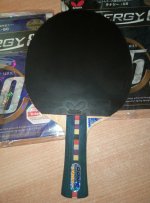This user has no status.
This user has no status.
Member
I'm trying to find out a little more about blades that use fibreglass as one of the piles. I am considering making a few blades with it. Can anyone help?
Specifically this kind of thing: playing characteristics; types of fibreglass used; weight and thickness; how easy or difficult is it to use? How does it contribute to the performance of the blade? how does it compare to carbon? is it worth bothering with?
Any and all information is useful.
Specifically this kind of thing: playing characteristics; types of fibreglass used; weight and thickness; how easy or difficult is it to use? How does it contribute to the performance of the blade? how does it compare to carbon? is it worth bothering with?
Any and all information is useful.











